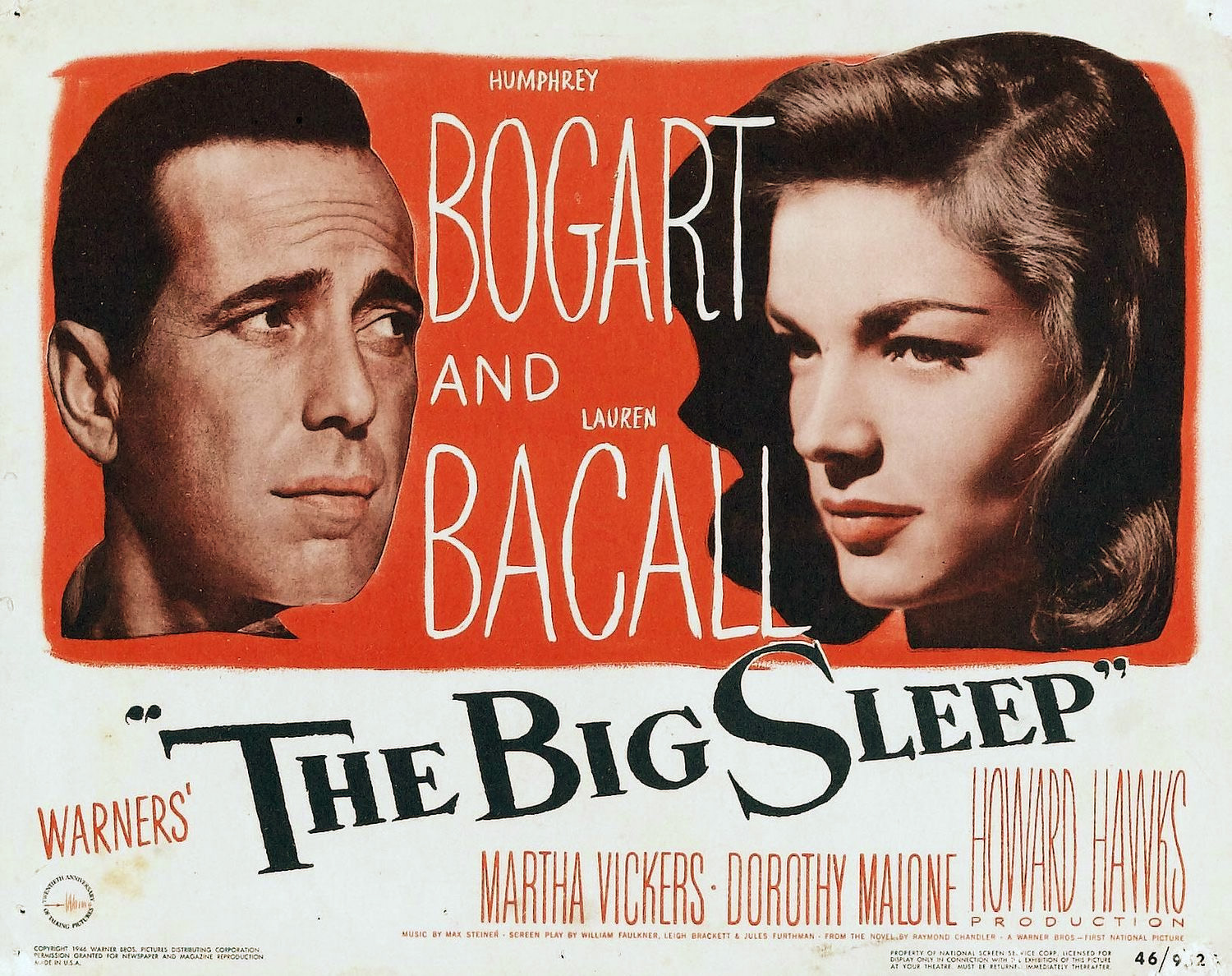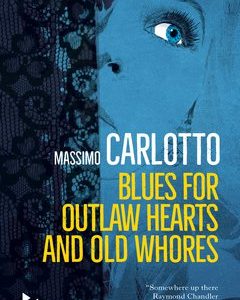Catch up on the series and find new installments daily here.
__________________________________
The Big Sleep (1946)
__________________________________
TYPE OF FILM: Detective
STUDIO: Warner Brothers
PRODUCER: Howard Hawks
DIRECTOR: Howard Hawks
SCREENWRITERS: William Faulkner, Jules Furthman, and Leigh Brackett
SOURCE: The Big Sleep, novel by Raymond Chandler
RUNNING TIME: 114 minutes
PRINCIPAL PLAYERS:
Humphrey Bogart…………………………………………………………………..Philip Marlowe
Lauren Bacall………………………………………………………….Vivian Sternwood Rutledge
John Ridgely…………………………………………………………………………….Eddie Mars
Martha Vickers…………………………………………………………………Carmen Sternwood
Dorothy Malone……………………………………………………………..bookshop proprietress
Peggy Knudsen……………………………………………………………………Mrs. Eddie Mars
Regis Toomey…………………………………………………………………………..Bernie Ohls
Charles Waldron………………………………………………………………..General Sternwood
__________________________________
DID YOU KNOW?
__________________________________
One of the most complicated plots in mystery fiction is that of The Big Sleep, both in the novel form and in the film version. Playing Marlowe, Bogart asked director Howard Hawks who had murdered Owen Taylor, the Sternwood chauffeur whose car is being pulled out of the water. Hawks admitted that he didn’t know but that he’d ask William Faulkner, who had worked on that sequence. Faulkner, too, said he didn’t actually know, so Hawks wired Chandler, who immediately fired back, “The butler did it.” There is no butler in the film.
__________________________________
THE STORY
__________________________________

The wealthy and dying General Sternwood summons Philip Marlowe to his home to stop the blackmailer who has pornographic pictures of his daughter, the very young Carmen Sternwood. After the family chauffeur murders the blackmailer, he, too, is found dead. The photos fall into the hands of the blackmailer’s boss, who tries to sell them to Carmen’s sister, Vivian, and he, too, is killed. Further murders, double crosses, and general bad behavior abound in a plot too convoluted for Chandler to write, for Faulkner to adapt, and for anyone to adequately summarize.
***
Humphrey Bogart again plays a tough private eye in The Big Sleep, just as he had in The Maltese Falcon, doing for Chandler what he had done for Hammett; he immortalized a fictional character while also making it very much his own, bearing small resemblance to the character in either book. Viewers are not watching a Philip Marlowe movie, they are watching a Bogart movie, which appears to be just fine with all concerned.
It was reported that the on-screen chemistry of Bogart and Bacall in Hawks’s To Have and Have Not was so great that the public clearly wanted to see them together again, and Bacall was hired to play opposite Bogart. The film was completed in the beginning of 1945, but because the studio wanted more and more of Bogart and Bacall, there had to be additional shooting and editing, which held the release of the film for about a year and a half. The extra time given to Bacall resulted in a smaller and smaller role for Martha Vickers as the young, drug-using, nymphomaniacal sister of Bacall.
Chandler was so pleased to have Bogart play Marlowe (incredibly, a letter he wrote in 1939, before Bogart made Casablanca and The Maltese Falcon and hence before he was a star, suggested that he thought Bogart would be the perfect screen Marlowe) that he sold the motion picture rights to The Big Sleep for $10,000, even though the studio told Hawks he could pay up to $50,000 for the rights. Chandler was simply too happy about the deal to consider negotiating a higher fee.
The 1978 remake starring Robert Mitchum as an excellent, if too old, Marlowe was more true to the novel, but it was updated and ludicrously shot on location in London.
__________________________________
BEST LINE
__________________________________
Vivian Sternwood has rebuked Marlowe for his offensiveness. He replies, “I don’t mind if you don’t like my manners. I don’t like them myself. They are pretty bad. I grieve over them on long winter evenings.”


















